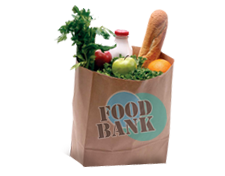Hungry Facts
THE HUNGRY FACTS
Many people do not realize the extent of hunger’s reach in this country. Each month, close to 850,000 Canadians are assisted by food banks, and 36.4% of those helped are children and youth.
The problem of hunger is a persistent one, with food banks providing comparable levels of food and other assistance for the better part of a decade.
Who is turning to food banks?
There is no single, typical profile. The people helped include families with children, employed people whose wages are not sufficient to cover basic living essentials, individuals on social assistance, and Canadians living on a fixed income, including people with disabilities and seniors.
Consider these figures from HungerCount 2013:
- 9.4% (78,311,212) people each month access a food bank for the first time.
- 36.4% of those turning to food banks are children and youth
- 4.3% of adults helped are over age 65
- 11.3% of people assisted are Aboriginal
- 50% of households helped receive social assistance
- 11.5% have income from current or recent employment
- 16.4% receive disability-related income supports
- 8% of food banks ran out of food during the survey period
- 50% of food banks needed to cut back on the amount of food provided to each household
These people live In cities, towns and villages. In the country. In your neighbourhood.
What are the causes of hunger in Canada?
Hunger in Canada exists because deep and persistent poverty continues in the country. For more than a decade, diverse and inter-related factors have sustained this situation: a labour market that fails to provide enough jobs with stable, livable wages; a rise in precarious and non-standard employment; a fraying income security system that does not provide sufficient financial support for those in need; a lack of affordable, social housing; and accessible and affordable child care. People living in poverty cannot afford sufficient, nutritious food. Many turn to food banks to help them meet this most basic need.
Where does the money go?
Many food banks turn to the purchasing of food in order to stock enough food to adequately serve the users that depend on them in their communities. To help food banks offset some of the related costs, the Ontario Association of Food Banks works with companies to provide opportunities for food banks to purchase food for distribution at a discounted rate.
Purchasing + Distribution of Perishable Goods
By donating cash, food banks are able to purchase FRESH AND HEALTHY perishable goods such as milk, eggs, fresh frozen fruits and vegetables and bread. 38% of food distributed in Canada is perishable.
By engaging farmers and volunteers in solutions to end hunger, programs such as Ontario’s Community Harvest Ontario provides a greater volume of fresh, healthy, local foods to Ontarians in need. Every year there is more than 25 million pounds of edible produce left of farmers’ fields after their initial harvest that is not commercially saleable. This is typically due to cosmetic reasons (small in size, or an odd shape) and usually results in the produce being tilled back into the soil. In 2012, over 1.5 million pounds of fresh produce was harvested and distributed to local food banks.







